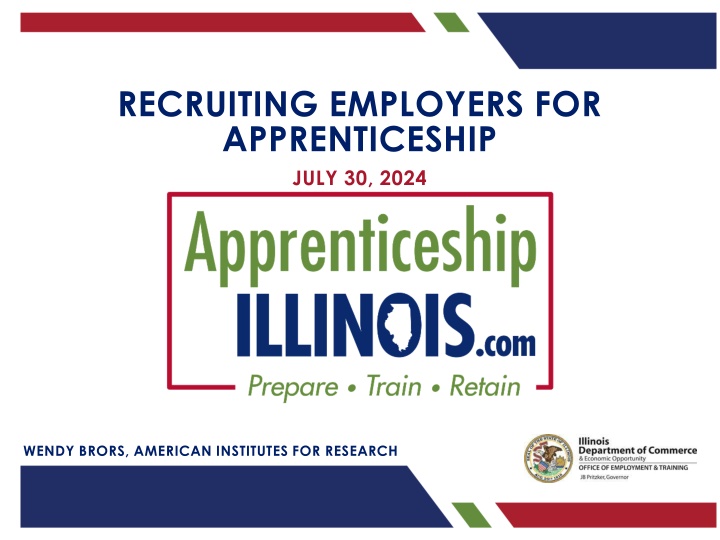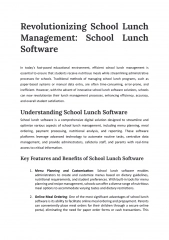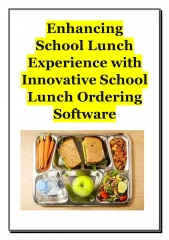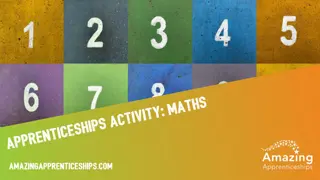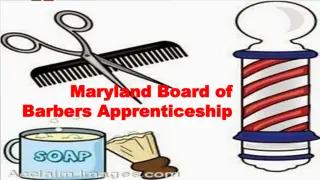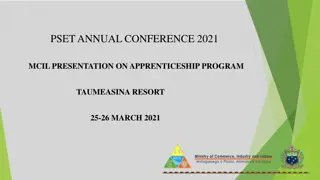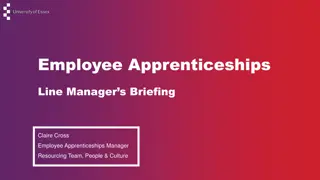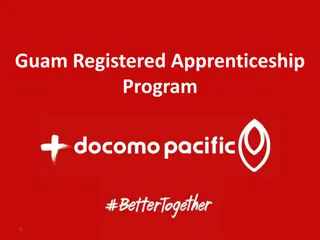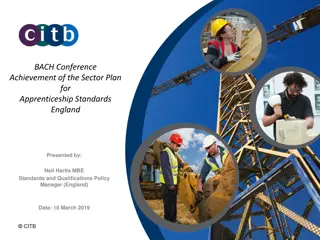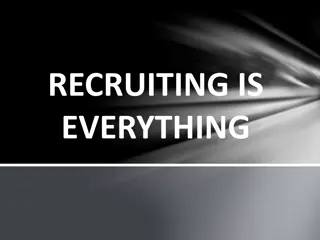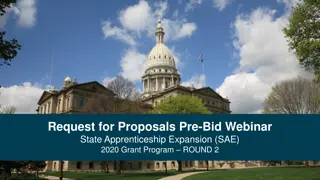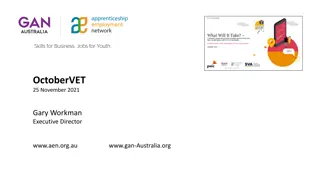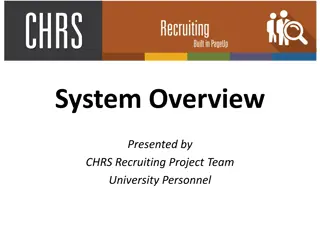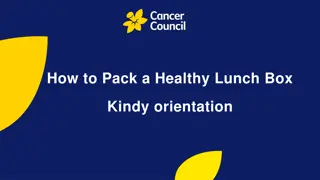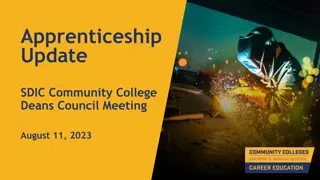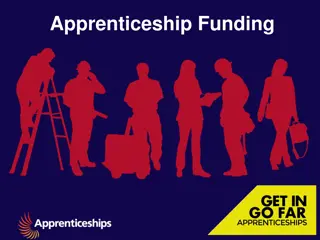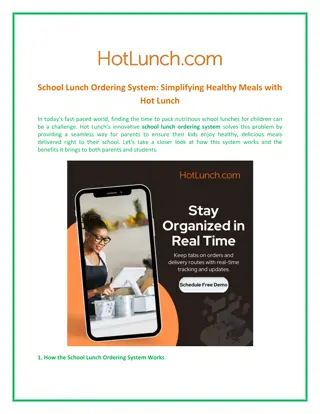Recruiting Employers for Apprenticeship - Wendy Brors Lunch & Learn Webinar
In this webinar series led by Wendy Brors from the American Institutes for Research, learn about successful employer recruitment strategies, utilizing the Employer's Journey framework, and understanding the employer's perspective in apprenticeship programs. Gain insights on lead generation, effective communication, and engaging with potential employer partners through different decision-making stages.
Download Presentation

Please find below an Image/Link to download the presentation.
The content on the website is provided AS IS for your information and personal use only. It may not be sold, licensed, or shared on other websites without obtaining consent from the author.If you encounter any issues during the download, it is possible that the publisher has removed the file from their server.
You are allowed to download the files provided on this website for personal or commercial use, subject to the condition that they are used lawfully. All files are the property of their respective owners.
The content on the website is provided AS IS for your information and personal use only. It may not be sold, licensed, or shared on other websites without obtaining consent from the author.
E N D
Presentation Transcript
RECRUITING EMPLOYERS FOR APPRENTICESHIP JULY 30, 2024 WENDY BRORS, AMERICAN INSTITUTES FOR RESEARCH
ABOUT THE PRESENTER: Wendy Brors is a Senior Technical Assistance Consultant in the Workforce Development program area within the Human Services Division at the American Institutes for Research (AIR). https://www.air.org/experts/person/wendy-brors The American Institutes for Research is providing collaborative technical assistance to Apprenticeship Illinois through a project that has been funded, either wholly or in part, with Federal funds from the Department of Labor, Employment & Training Administration under Contract number, 1605C2-20-C-0009, the contents of this publication do not necessarily reflect the views or Email: wbrors@air.org policies of the Department of Labor, nor does mention of trade names, commercial products, or organizations imply endorsement of same by the U.S. Government." 3
LEARNING OBJECTIVES 1. Value from using Employer s Journey framework 2. Tips for successful lead generation 3. Communications matter 4. No is rarely never, No is often not now 4
How are you going to advance your employer recruitment?
SUPPORT THE EMPLOYERS JOURNEY A framework to meet employers where they are at in their decision journey. YOUR CLIENT (A Potential Employer Partner) STAGE YOUR ACTIONS Focus on problems and pain points. Be present where businesses are. Becomes aware of pain: status quo loosens AWARENESS Use big-picture industry-focused content in communications. Discover their specific challenges empathetically. Explain apprenticeship as a solution. Educate and help prospects evaluate decision-making criteria. Gets interested in finding a solution; begins to discover trends, products, brands. INTEREST Use tools like self-assessments, webinars, events, reports, videos, individual meetings. Show the value offered and provide evidence of return on investment. Evaluates specific products and services; becomes willing to engage with technical assistance providers and experts. CONSIDERATION Supply information like costs and benefits, case studies, similar programs. Validate the client s decision, onboard employer. Commits to a specific solution; justifies reasons for investment. DECISION Use training, fact sheets, user guides, toolkits. 6
UNDERSTAND THE EMPLOYERS PERSPECTIVE Workforce Planning Supply analysis, also referred to as the "supply model" or "staffing assessment," involves an analysis of an organization's current labor supply. Demand analysis, also referred to as the "demand model," includes a review of future business plans and objectives. Gap analysis compares the differences in the supply and demand models and identifies skill surpluses and deficiencies. Solution analysis focuses on how to address gaps in current staffing and future staffing needs through recruiting, training and development, contingent staffing, and outsourcing. https://www.shrm.org/resourcesandtools/tools-and-samples/toolkits/pages/practicingworkforceplanning.aspx 7
AWARENESS Our business needs more skilled workers YOUR CLIENT (A Potential Employer Partner) STAGE YOUR ACTIONS Focus on problems and pain points. Be present where businesses are. Becomes aware of pain: status quo loosens AWARENESS Use big-picture industry-focused content in communications. Discover their specific challenges empathetically. Explain apprenticeship as a solution. Educate and help prospects evaluate decision-making criteria. Gets interested in finding a solution; begins to discover trends, products, brands. INTEREST Use tools like self-assessments, webinars, events, reports, videos, individual meetings. Show the value offered and provide evidence of return on investment. Evaluates specific products and services; becomes willing to engage with technical assistance providers and experts. CONSIDERATION Supply information like costs and benefits, case studies, similar programs. Validate the client s decision, onboard employer. Commits to a specific solution; justifies reasons for investment. DECISION Use training, fact sheets, user guides, toolkits. 8
MARKETING TO DRIVE INBOUND INQUIRES https://www.illinoisworknet.com/ApprenticeshipIL/Pages/Employers.aspx Marketing Collateral (web page, flyers, videos) Thought leadership (blog, social media, presenting at events) Networking at events On-demand Info Sessions 9
INTEREST What is apprenticeship and how could it help? YOUR CLIENT (A Potential Employer Partner) STAGE YOUR ACTIONS Focus on problems and pain points. Be present where businesses are. Becomes aware of pain: status quo loosens AWARENESS Use big-picture industry-focused content in communications. Discover their specific challenges empathetically. Explain apprenticeship as a solution. Educate and help prospects evaluate decision-making criteria. Gets interested in finding a solution; begins to discover trends, products, brands. INTEREST Use tools like self-assessments, webinars, events, reports, videos, individual meetings. Show the value offered and provide evidence of return on investment. Evaluates specific products and services; becomes willing to engage with technical assistance providers and experts. CONSIDERATION Supply information like costs and benefits, case studies, similar programs. Validate the client s decision, onboard employer. Commits to a specific solution; justifies reasons for investment. DECISION Use training, fact sheets, user guides, toolkits. 10
STIMULATE INTEREST Outbound lead generation Understand your labor market Build a target lists Reach out to employers 11
SALES OUTREACH STATISTICS Making decisions typically involves an internal project approval process 41.2% of salespeople said their phone is the most effective sales tool at their disposal. 19% of buyers want to connect with a salesperson during the awareness stage of their buying process when they're first learning about the product. 60% want to connect with sales during the consideration stage after they've researched the options and come up with a shortlist. 20% want to talk during the decision stage once they're decided which product to buy. Only 24% of sales emails are opened. 80% of sales require 5 follow-up calls, yet 44% of salespeople give up after one follow-up call. Eight out of 10 prospects want to talk to sales reps via email over any other medium. https://blog.hubspot.com/sales/b2b-outreach-strategy-for-startups 12
BUILD MUTUALLY BENEFICIAL RELATIONSHIPS https://business.linkedin.com/marketing-solutions/success/lead-generation 13
BUILD YOUR TARGET LIST Finding employers to target Create an ideal customer profile Identify the personas you ll likely speak to (HR, front-line manager, other) Gather existing business lists your organization may have Research to find other relevant business lists (eco devo organizations, co-working spaces, chambers of commerce, trade associations, sector partnerships, etc.) Gather job posting data to see who is hiring for targeted occupation(s) (NLx) Tap into other typically paid-for lists (Zoominfo; LinkedIn; D&B Hoovers Essentials; Uplead; Experian) Attend events to network (Local events for businesses (industry councils/associations, chambers, eco dev, professional associations, meet ups) Leverage social media networks 14
PREPARE OUTREACH COMMUNICATION A Guide to Cold Calling, https://hbr.org/2016/09/a-guide-to-cold-emailing Review employer s career page, their social media accounts Summary content useful for writing compelling emails: When crafting an email or script: 1. Vision and value proposition one Tailor the message to the recipient (show you ve done your research) sentence! 2. The problem for employers Validate yourself (explain who you know in common, or how you found them) 3. The solution for employers 4. Top 3 benefits for employers Alleviate your audience s pain or give them something they want 5. Program specs very high level 6. Social proof, examples of employers Keep it short, easy, and actionable 7. Call to action Be appreciative and a little vulnerable 15 A Guide to Cold Calling, https://hbr.org/2016/09/a-guide-to-cold-emailing
EMAIL COPY #1 Example Employers throughout the United States are experiencing one of the greatest skills gaps in history. The global pandemic accelerated the future of work, and almost every employer is struggling to find qualified tech talent. In fact, CompTIA reports that 76% of IT decision-makers are experiencing critical skills gaps on their teams. That is a 145% increase since 2016. WHY? Because they are all going to the same sources for talent, and it does not exist. Today, complex challenges confound an already difficult IT and cybersecurity jobs landscape. WHAT TO DO? Organizations everywhere are realizing the risks and pitfalls involved in sticking with the status quo in terms of who they hire for tech, and how they hire for tech. Many know it's time to think bigger, think stronger, and think longer-term about tech talent development. Learn more about innovative solutions to fill tech roles in this Business Case and how you can develop skilled employees through apprenticeships. There are real solutions to fill the hardest-to-fill tech roles, like help desk, cybersecurity support technician, data analysts and more, best of all you can speak with an expert, through an initiative funded by the United States Department of Labor Employment and Training Administration, book an initial consultation today! 16
EMAIL COPY #2 Example Are you experiencing hiring challenges for tech roles? You aren't alone; 3 out of every 4 employers tell us that they cannot fill tech roles. If you are willing to think differently about hiring, be innovative in your approach to upskilling existing staff, and want to get ahead of your competitors who are all fighting for the limited supply of talent. We can help. If you are experiencing hiring challenges; and want to explore talent trends and solutions. Here are two resources that may be of interest to you, the <resource 1> and this Business Case for hiring and training differently. Have you heard about registered apprenticeships but have your doubts? We can help you decide if it can be the right talent solution for you. Watch a short Informational Video (11m), read the Getting Started guide. Don't waste another minute guessing or wondering if apprenticeship as a solution will work for you, book an initial consultation with one of our experts. 17
VALUE PROPOSITIONS THAT MATTER TO BUSINESS Examples Diversity. Retention. Industry recognition. Skills gap solution. Apprenticeship gives organizations the chance to smartly diversify their teams and tap into new perspectives about new and existing business challenges. The X sector has been woefully under-diverse for years, and apprenticeship offers a sustainable way to improve workforce diversity. 94% of apprentices retain employment after their program ends, according to the Department of Labor. Retention boosts morale and, in equal measure, benefits the employer and the apprentice. The world-class certification and knowledge apprentices unlock during an apprenticeship will be critical to helping them access high- demand jobs. Apprenticeship is a quick and trusted way to help close the alarming skills gap facing the nation and to raise the collective tech IQ of teams. 18
THE FIRST THE FIRST CONVERSATION CONVERSATION EMPATHIZE AND EMPATHIZE AND INFORM INFORM 19
POTENTIAL EMPLOYER NEEDS The business case To contribute to our efforts to support their community inclusively and equitably To build a more reliable talent pipeline and address a persistent skills gap To provide employees with clearer internal career pathways To support our shift to competency-based hiring and performance management For cost effective recruitment, hiring, and training To upskill existing employees To provide timely training in specific knowledge and skills that meet business needs and keeps pace with industry To enhance program sustainability and success through an apprenticeship program To develop future leaders through a proven mentorship method 20
EXPLAIN YOUR MISSION AT A HIGH LEVEL Share information about apprenticeship to enable employers to decide options for engaging Apprenticeship for reskilling/upskilling Apprenticeship for new hires Employers as sponsors and/or hiring partners Connect employer to relevant next steps based on their needs 22
USE BUSINESS SPEAK BUSINESS SPEAK Recruitment & Interviewing Job Internal/ External Training Education Mentoring, Supervision of Work, Performance Managemen t Merit-Based Increases, Performance Increases Position/ Title Change / Conversion to Full-Time Descriptions / Position Responsibilit ies APPRENTICESHIP SPEAK Outreach & Selection Work Related Technical Instruction Mentored On the Job Learning (OJL) Stepped-Up Wages or Progressive Wage Scale Certificate of Completion Processes/Comp etencies 23
BE PREPARED TO ADDRESS MISCONCEPTIONS All apprenticeship programs take 4 years to complete. Apprenticeships and internships are the same thing. Apprenticeships are a way for companies to get low-cost labor. Apprenticeships are only for the building and construction trades. Apprenticeships are only for young staff or recruiting new staff. Current employees cannot participate in apprenticeship programs. Apprenticeships cost too much for employers. Only unions or large single employers can be sponsors or have apprenticeship standards. Registering an apprenticeship program is too bureaucratic, extensive, and difficult. 24
CONSIDERATION Is registered apprenticeship the right one for us to join? YOUR CLIENT (A Potential Employer Partner) STAGE YOUR ACTIONS Focus on problems and pain points. Be present where businesses are. Becomes aware of pain: status quo loosens AWARENESS Use big-picture industry-focused content in communications. Discover their specific challenges empathetically. Explain apprenticeship as a solution. Educate and help prospects evaluate decision-making criteria. Gets interested in finding a solution; begins to discover trends, products, brands. INTEREST Use tools like self-assessments, webinars, events, reports, videos, individual meetings. Show the value offered and provide evidence of return on investment. Evaluates specific products and services; becomes willing to engage with technical assistance providers and experts. CONSIDERATION Supply information like costs and benefits, case studies, similar programs. Validate the client s decision, onboard employer. Commits to a specific solution; justifies reasons for investment. DECISION Use training, fact sheets, user guides, toolkits. 25
SHARE DETAILS ABOUT RELEVANT PROGRAMS What is the cost to the employer? Are their funds available to offset costs? How do I find local partners? What is the typical startup timeframe? Is there flexibility with who provides the related instruction? May I customize the program to my business needs? Do you help me prepare my mentors? What are the reporting requirements? What if an apprentice doesn t work out? 26
DECISION Yes, we have internal agreement and resources to do this, let s get started! YOUR CLIENT (A Potential Employer Partner) STAGE YOUR ACTIONS Focus on problems and pain points. Be present where businesses are. Becomes aware of pain: status quo loosens AWARENESS Use big-picture industry-focused content in communications. Discover their specific challenges empathetically. Explain apprenticeship as a solution. Educate and help prospects evaluate decision-making criteria. Gets interested in finding a solution; begins to discover trends, products, brands. INTEREST Use tools like self-assessments, webinars, events, reports, videos, individual meetings. Show the value offered and provide evidence of return on investment. Evaluates specific products and services; becomes willing to engage with technical assistance providers and experts. CONSIDERATION Supply information like costs and benefits, case studies, similar programs. Validate the client s decision, onboard employer. Commits to a specific solution; justifies reasons for investment. DECISION Use training, fact sheets, user guides, toolkits. 27
THEYVE DECIDED NOW WHAT? Be responsive and follow-up For Yes - follow the referral process (build your own program, hire through an intermediary) For No offer ways for them to stay engaged with apprenticeship such as: Inform and invite them to sign up for the IL Apprenticeship Bulletin Inform and invite to participate in NAW Ask them if they d like to contintue to deepen their knowledge about apprenticeship (refer to https://www.apprenticeship.gov/registered-apprenticeship-academy Ask them if they d like to be connected to an employer with active apprentices to learn more Ask them if you can reach back out to them in 3 to 6 months to see if anything s changed 28
Always Always Follow-up Document
Questions? 30
HOW ARE YOU GOING TO ADVANCE YOUR EMPLOYER RECRUITMENT? 1. Find business-member organizations to partner with 2. Deepen knowledge of potential employers and their open job roles or internal upskilling needs 3. Get organized to support employers through their decision journey 4. Create new or refresh existing collateral 5. Use business speak, embrace new messaging about apprenticeship as a talent solution 6. Other 31
CONTACT US: Jennifer Foil jfoil@niu.edu Nate Carlson NCarlson@NIU.edu 32
